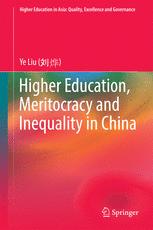

Most ebook files are in PDF format, so you can easily read them using various software such as Foxit Reader or directly on the Google Chrome browser.
Some ebook files are released by publishers in other formats such as .awz, .mobi, .epub, .fb2, etc. You may need to install specific software to read these formats on mobile/PC, such as Calibre.
Please read the tutorial at this link. https://ebooknice.com/page/post?id=faq
We offer FREE conversion to the popular formats you request; however, this may take some time. Therefore, right after payment, please email us, and we will try to provide the service as quickly as possible.
For some exceptional file formats or broken links (if any), please refrain from opening any disputes. Instead, email us first, and we will try to assist within a maximum of 6 hours.
EbookNice Team

Status:
Available4.5
15 reviewsThis book investigates the changing opportunities in higher education for different social groups during China’s transition from the socialist regime to a market economy. The first part of the book provides a historical and comparative analysis of the development of the idea of meritocracy, since its early origins in China, and in more recent western thought. The second part then explores higher education reforms in China, the part played by supposedly meritocratic forms of selection, and the implications of these for social mobility.
Based on original empirical data, Ye Liu sheds light on the socio-economic, gender and geographical inequalities behind the meritocratic façade of the Gaokao (高考). Liu argues that the Chinese philosophical belief in education-based meritocracy had a modern makeover in the Gaokao, and that this ideology induces working-class and rural students to believe in upward social mobility through higher education. When the Gaokao broke the promise of status improvement for rural students, they turned to the Chinese Communist Party and sought political connections by actively applying for its membership. This book reveals a bleak picture of visible and invisible inequality in terms of access to and participation in higher education in contemporary China. Written in an accessible style, it offers a valuable resource for researchers and non-specialist readers alike.